Print our Crib Sheet
We understand that it is not always possible to look at an online page when inside a tower that has three foot thick stone walls… and some folks just like to have something tangible….
So to help, we have produced a crib sheet which prints as a two sided A4 sheet. (If your printer can print both sides, remember to set it to ‘short edge binding’ so the second page prints the right way up!)
The crib sheet contains most of the information you see on this web page and the Cambridge By Rules page, but formatted for A4 paper!
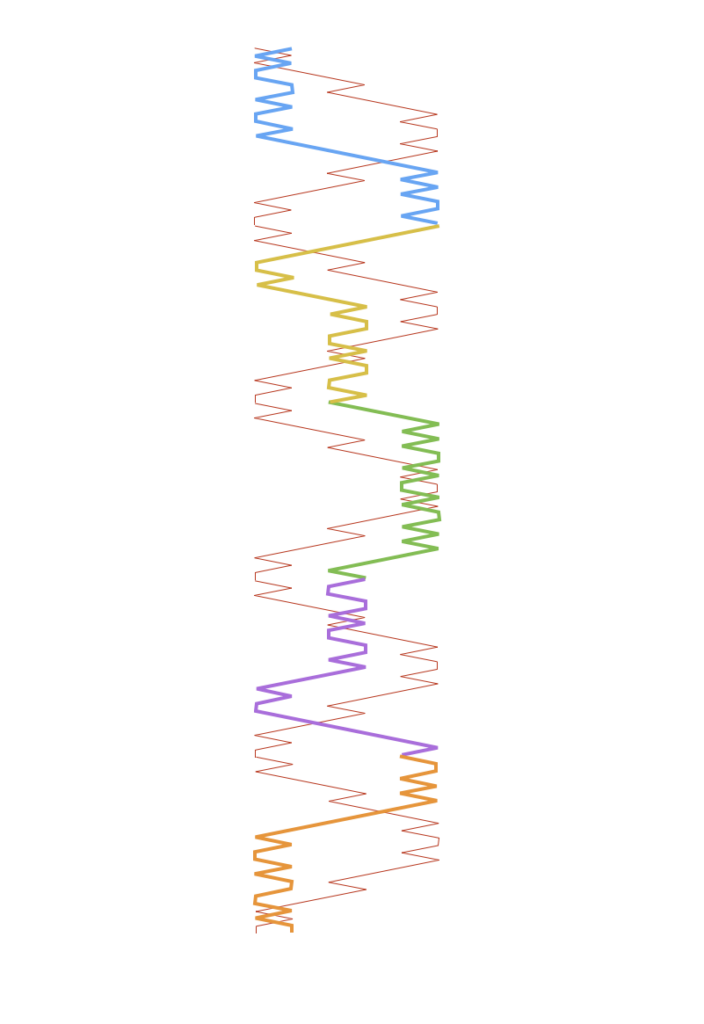
The Line
Cambridge is perhaps the best known and most frequently rung Surprise method.
It is a long and complex line which we learn in blocks… front, middle and back.
This basic learning blocks can then be used in conjunction with some rules to extend to major, royal and maximus.
As we extend, we only really add more middle work… the front and back works basically stays the same!
As we will see, it extends in a very logical way and rules for passing the treble, the coursing order and place bell start are all consistent.
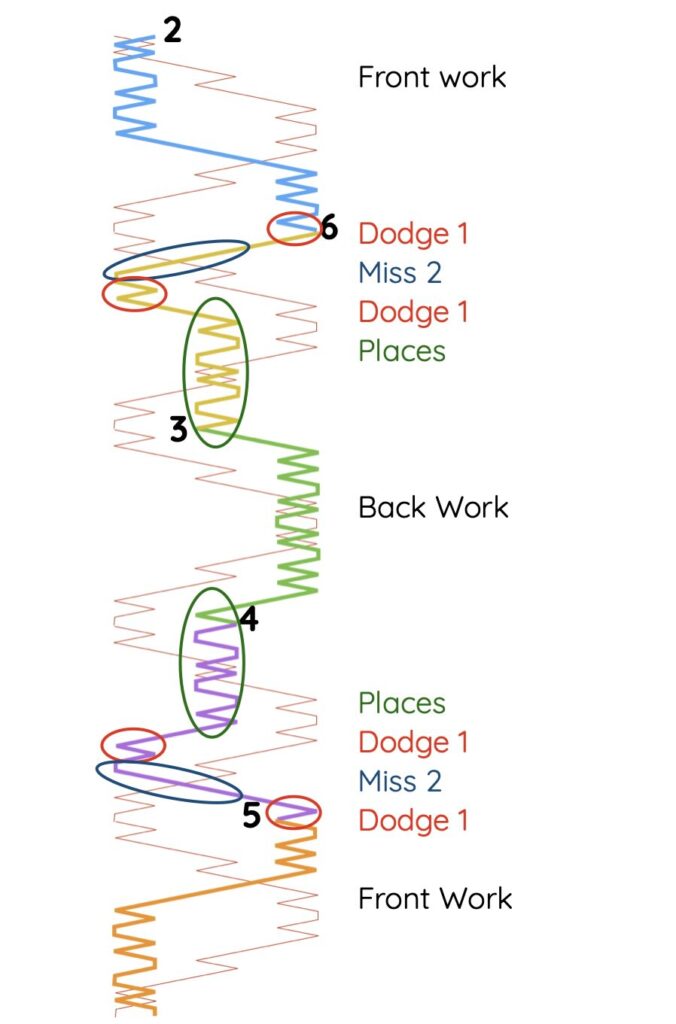
The Rules
It is possible to ring Cambridge by a simple set of rules. The rules work with any stage from minor to maximus… or beyond.
To do this, you need to be able to ring the front, middle and back works, plus treble bobbing..
Minor Rule
Dodge 1, miss 2, dodge 1, places…
It starts from the dodge after the front work closing double dodge… and then feeds into the back work.
The other rules are very similar… just incrementing the dodges by one…
Major Rule
Dodge 2, miss 2, dodge 2, places…
Royal Rule
Dodge 3, miss 2, dodge 3, places…
Maximus Rule
Dodge 4, miss 2, dodge 4, places…
Major Rule
- Dodge 2, Miss 2 , Dodge 2, Places.
- Repeat for the second set of places.
- Reverse after the backwork.
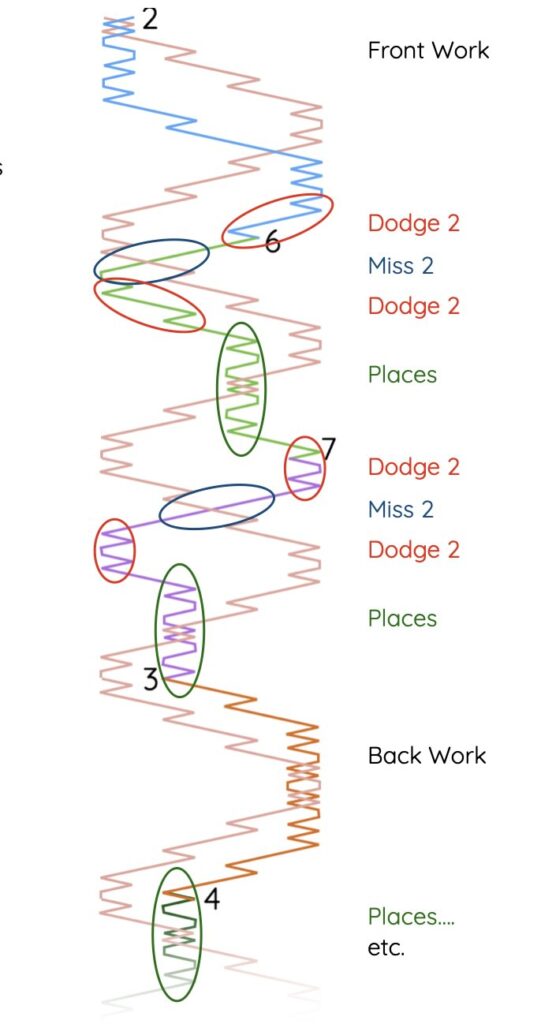
Royal Rule
- Dodge 3, Miss 2 , Dodge 3, Places.
- Repeat for the second and third set of places.
- Reverse after the backwork

Maximus Rule
- Dodge 4, Miss 2 , Dodge 4, Places.
- Repeat for the second, third and fourth set of places.
- Reverse after the backwork
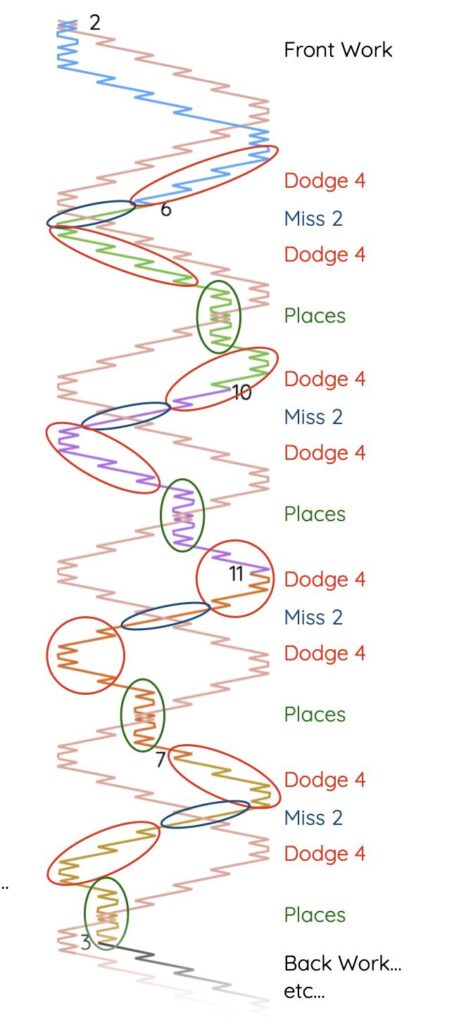
Coursing Order
Although as a method it might seem very complicated, Cambridge still has a very simple coursing order….
- 2, 4, 6, 5, 3 for minor
- 2, 4, 6, 8, 7, 5, 3, for major
- 2, 4, 6, 8, 10, 9, 7, 5, 3, for Royal
- 2, 4, 6, 8, 10, 12, 11, 9, 7, 5, 3, for Maximus
Exactly the same as Plain Hunt and many other methods!
In practice, this is particularly useful as it means you will always dodge with the same two bells at the back… one for the up dodges and one for the down (excepting 3rds place bell with the treble!).
Place Bell Order
The place bell order in minor is: 2, 6, 3, 4, 5…
At a first glance, this appears a bit random, but a quick look at the coursing order shows it is every other bell….
2, 4, 6, 5, 3 2, 4, 6, 5, 3
Major and the other extensions are the same…. alternate bells in the order….
2, 4, 6, 8, 7, 5, 3, 2, 4, 6, 8, 7, 5, 3, for major
2, 4, 6, 8, 10, 9, 7, 5, 3, 2, 4, 6, 8, 10, 9, 7, 5, 3, for Royal
2, 4, 6, 8, 10, 12, 11, 9, 7, 5, 3, 2, 4, 6, 8, 10, 12, 11, 9, 7, 5, 3,
so actually quite logical and straightforward.
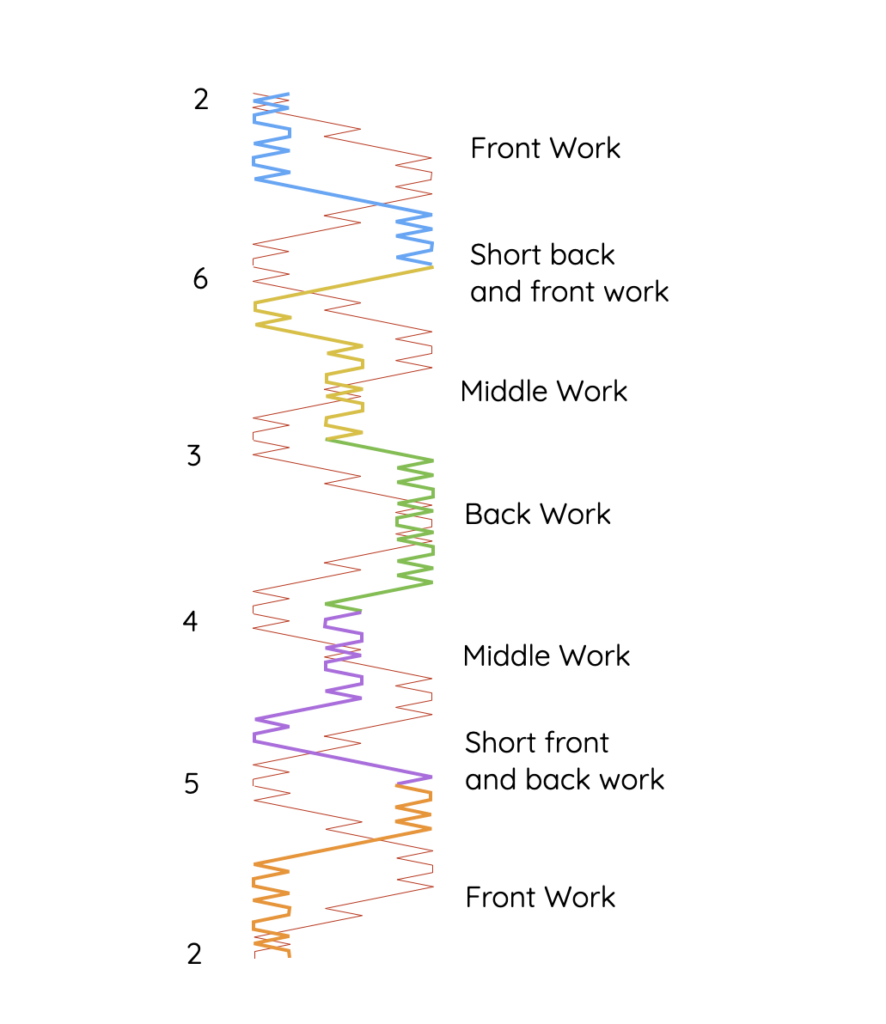
Place Bell Starts
The place bell starts are consistent from minor to maximus… so as long as you know the extra starts… nothing really changes as you move to the next stage!.
2 ….is mid front work.
6 ….end of ‘dodge n’ then miss 2…
10 ….one dodge then miss 2.
11 ….two dodges then miss 2
7 ….beginning of ‘dodge n’ then miss 2
3 ….starts back work.
4 ….3-4 places
8 ….to 5-6 places
12 ….treble bob to 7-8 places
9 ….treble bob to 9-10 places
5 ….treble bob to double dodges and front work.
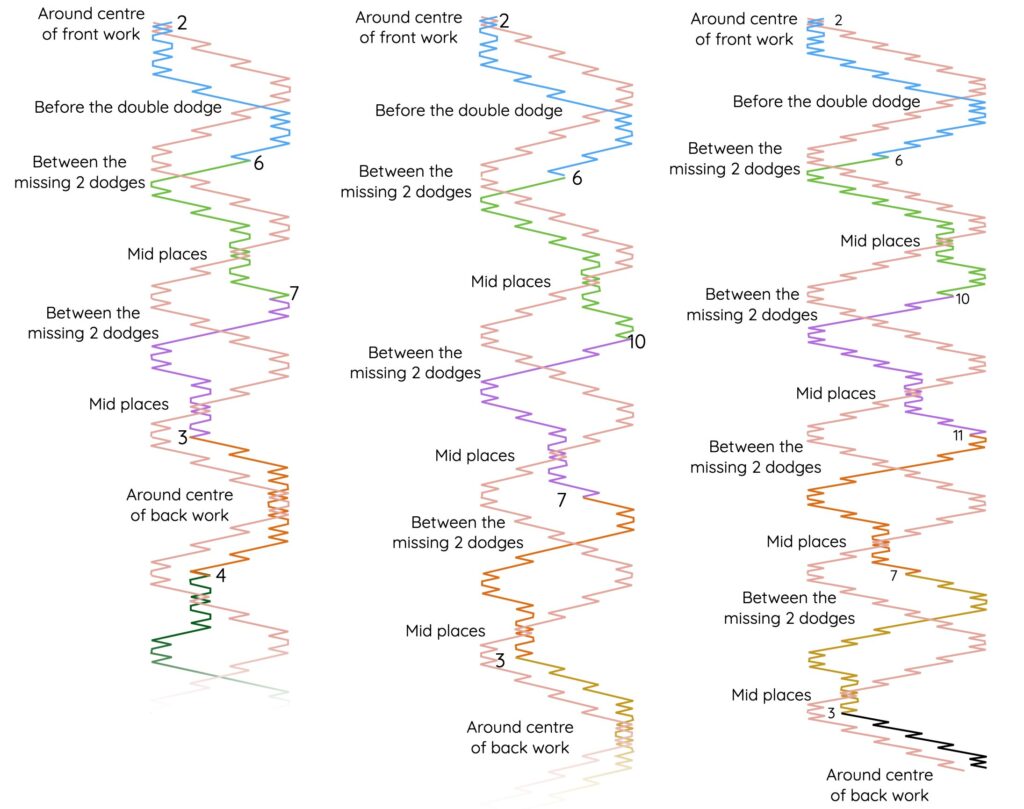
Passing the Treble
Passing the treble can also be changed to four simple rules for all the stages of Cambridge.
- Dodge with treble in the centre of the middle work places.
- Pass the treble in the centre of the missing dodges.
- Dodge and make a place around the treble at the centre of front work and back work.
- Pass the treble adjacent to the double dodges at the beginning/end of the front work.
Below are links to a couple of alternative tutorials…

